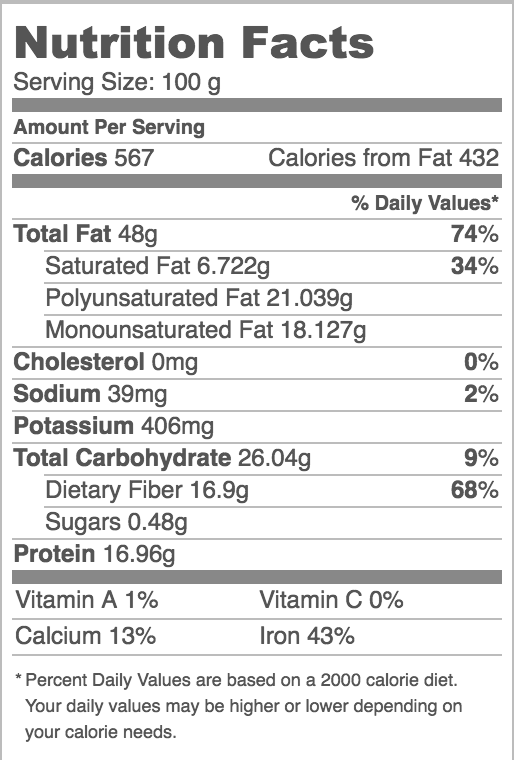
Nutrition Facts Frenzy
All this talk about nutrition facts, what to eat, what not to eat, and all sorts of ingredients to avoid can be overwhelming and confusing. What all is on the Nutrition Facts? Let’s start from the top down.
Free Nutrition EBOOK Click HERE

“Serving size” is the amount of this specific product the company has measured and posted nutrition facts for. Depending on the product, the serving size can be 1 item or 15 items. Whether you eat the serving size or not is up to you. Underneath the ‘Serving Size’ header, products will post ‘Serving per Container’, which tells you how many servings is in this one packaged item. My example shows that there is only 1 serving per container.
“Calories” tells you the number of calories that are in 1 serving. “Calories from fat” simply distinguishes fat calories from other calories. Fat has more calories per gram than carbohydrates and proteins. These calories are included in the ‘Calories’ total so no need to add them in again!
“Total fat” will be the total of all fats in the product. Watch your saturated and trans fat levels carefully. For a 2,000 calorie diet, the recommended amount is no more than 22 grams of saturated and 1 gram of trans fat per day.
If your doctor has indicated he wants you to lower your cholesterol and sodium intake, please keep an eye on these totals. Ask your doctor the amount he would recommend for you per day. The average person with no health risks should consume around 1,500mg of sodium and less than 300 mg of cholesterol per day.
“Total Carb” tells you how many carbohydrates are in the product and includes dietary fiber and sugars.
“Protein” tells you the total amount of protein in one serving of the product.
Under the protein total, you will find a list of major vitamins and minerals that the product provides.
The percentages alongside the totals can add to the confusion. The percentages are based on a 2,000 calorie diet. If you eat 2,000 calories, you are set. If you eat more or less, you’ll have to do a bit more math. Personally, I don’t worry about these. That’s too much math for me – especially when I am hungry! I track my totals using an app on my phone so it is based on my personal goals.
You need to know how many servings of the product you are eating. If eating more than one serving, you’ll have to do a little math to know your caloric intake. So before you rip open that bag of cashews checks your nutrition facts!
How do you know if the item should even make it into your cart?
There is a simple process I like to use to ensure general health. First, I look at the ingredient list I try to choose foods with as few as ingredients as I can find. I also like to make sure I can read and understand 90% of the ingredient’s list. Remember, Mother Nature makes it best, so try to get as close to how She made it as possible.
I then check out the sugars. I try to avoid foods with more than 12g of sugar per serving. Then I move on to serving size and calories per serving. If the serving size is tiny but has a lot of calories, I won’t buy the item because I will end up eating more than one serving and adding a ton of extra calories. I like big serving sizes with low-calorie totals so I can eat more, feel full and not feel cheated. Also, to keep my sodium within a healthy range, I try to avoid items with more than 290mg of sodium. I also make sure I don’t add extra salt to my dishes.
Don’t get in a frenzy over the nutrition facts, just break the information down and know what you need to watch. A healthy lifestyle is created one choice at a time.
Tiffany
References:



